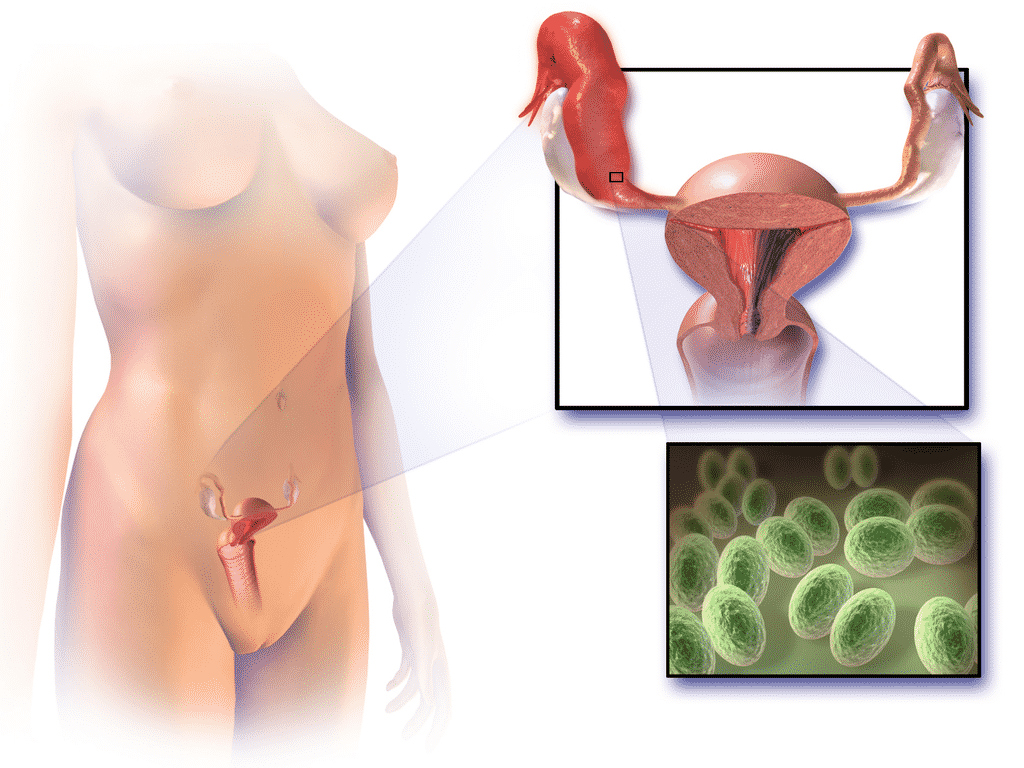Pelvic inflammatory disease (PID) is a common issue for many women around the world. While many different causes can lead to the occurrence of this health issue, one of the most common cause is the presence of a sexually transmitted disease, specifically the presence of gonorrhea and chlamydia. In today’s article, we will share information on the topic of pelvic inflammatory disease caused by STDs and why it is important to get tested and treated in time.
What is a pelvic inflammatory disease?
Pelvic inflammatory disease is the term that refers to a condition that characterizes itself with infection of the female reproductive system. In 2013, around 88,000 women ages 15-44 had been diagnosed with PID in the United States alone. Each year, an estimated one million women struggle with this condition. It has also been suggested that 10-15% of all women experience PID at least once in their lifetime.
The common symptoms of the pelvic inflammatory disease include:
- Pain in the lower abdomen, which is the most common symptoms caused by PID;
- Mild to more severe pelvic pain;
- Painful sexual intercourse;
- Painful and frequent urination;
- Fever;
- Vomiting;
- Fainting;
- Increased vaginal discharge with a strong smell;
- Irregular menstrual bleeding;
- Fatigue, etc.
If left untreated, PID can lead to some serious complications. A tubo-ovarian abscess often develops as well as chronic pelvic pain. If PID develops in pregnant women, it can lead to an ectopic pregnancy, compromising the life of the fetus. There is also a high risk of infertility as well. All of these dangerous complications point out the importance of proper treatment and prevention.
Sexually transmitted diseases as causes for PID in women
Some of the risk factors for developing the pelvic inflammatory disease are:
- Having sexual intercourse before the age of 25;
- Having multiple sexual partners;
- Having unprotected sexual intercourse;
- Having a history of PID;
- Having recently inserted an intrauterine device (IUD);
- Douching, etc.
However, the greatest risk factors for developing PID is the presence of gonorrhea and chlamydia or having had a medical history that includes these or any other sexually transmitted diseases. It is very common for the infection, that is later causing the characteristic symptoms of PID, to develop after certain bacteria, such as Neisseria gonorrhoeae and Chlamydia trachomatis which are causing these two common STDs with that being gonorrhea and chlamydia, move upward from the vagina or cervix into the reproductive organs. PID is one of the most common health complications that happen due to an untreated STD.
PID can easily spread through unprotected sexual contact, affecting more and more people. This is why it is very important to get tested in time and recommend your partner to do the same. Getting tested in time is especially important for male partners that you have engaged in unprotected sexual contact since men can be silent carriers of the bacteria that then causes the symptoms of pelvic inflammatory disease.
Is it possible to treat PID?
PID is highly treatable if diagnosed early. But one thing that you should know is that although proper treatment can and will eliminate the symptoms of pelvic inflammatory disease, it is not possible to undo the damage that has been done, meaning that any complication or complications that have happened cannot be reversed. This is why it is very important to get treated as soon as you notice any signs and symptoms of either STD or PID to help preserve your reproductive, but also general health.
Since it is a bacterial infection that is causing pelvic inflammatory disease, you will be prescribed antibiotics to treat the existing infection. If there is an abscess forming as a complication of the existing PID, surgery may be required to be done as well.
How to prevent PID and STDs in general?
Everyone can act to lower their risk of contracting STDs and PID. There are a few simple steps that need to be followed to do that:
- Always practice safe, protected sex;
- Get tested in time if you notice any signs and symptoms of either an STD or a PID;
- Avoid douches;
- Inform your partner/partners to get tested if you have tested positive for the presence of either an STD or a PID;
- Get informed about the perks of practicing safe sex;
- Limit the number of your sexual partners.
References
https://www.ncbi.nlm.nih.gov/books/NBK499959/
https://www.womenshealth.gov/a-z-topics/pelvic-inflammatory-disease

